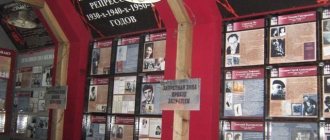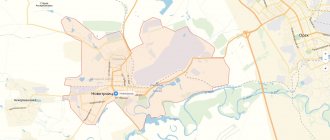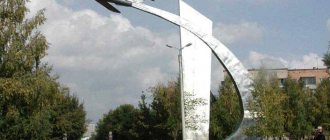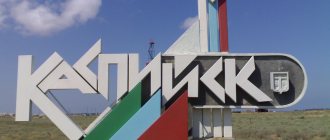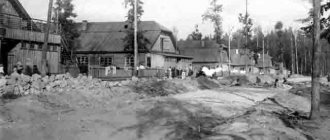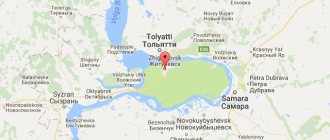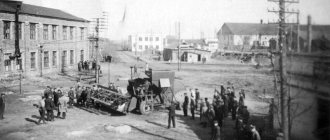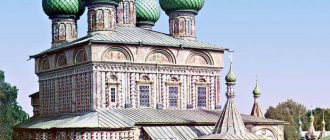UNESCO heritage
The Solovetsky Islands are located in the White Sea near Onega Bay. Administratively, the archipelago belongs to the Arkhangelsk region. However, due to the geographical location and transport accessibility, most pilgrims and tourists come to Solovki from Karelia. The entire territory of the islands, as well as a five-kilometer zone in coastal waters, has been declared a nature reserve.
Solovetsky Monastery is under UNESCO protection
On the Solovetsky Islands there are many man-made objects created by man over a huge period - from the 3rd millennium BC to the present day. The main asset of Solovki is considered to be a unique complex of defensive, religious and civil buildings scattered across the islands. Tourists also flock here to see with their own eyes such mysterious ancient structures as dolmens, mounds and stone labyrinths.
Many famous people have visited the archipelago. In particular, Russian President Vladimir Putin was the guest of honor. His Holiness Patriarch Alexy II came here. The monastery hosted the Swedish king Charles XIV Gustav, Prince of Wales, as well as diplomats from around the world. The Solovetsky architectural and historical complex is so unique that it was included in the UNESCO list of world cultural heritage.
Through the thorns to the stars
The history of the Solovetsky Islands begins in the 2nd millennium BC. The famous Solovetsky labyrinths, mounds and seids come from those times and are still mysteries. Archaeologists have found traces of sites of primitive people on the coast. This indicates that already in ancient times there was a developed culture on the archipelago. It is difficult to imagine what forced people to settle in such harsh places.
In 1428, Herman, a resident of the city of Totma, appeared on the Karelian White Sea coast. He was looking for a place to retire. Together with the monk of the Kirillo-Belozersky Monastery Savvaty, they crossed to the archipelago and settled in the north of the Big Solovetsky Island. Not far from Sosnovaya Bay, the settlers erected a cross and built cells. This is how the first permanent residents appeared on the island.
The history of the development of the Solovetsky Islands goes back several thousand years.
Subsequently, the monk Zosima settled on the island. It so happened that he dreamed of a “great church.” This vision predetermined the choice of the place where the monastery was founded. Since then, 1436 has been considered the year of foundation of the Solovetsky Monastery. By the 16th century, in addition to monastic buildings, the archipelago had mills, salt pans, a farmyard and seaworthy ships. The spiritual patrimony of the monastery covered a vast territory northeast of Moscow.
In the 60s of the 17th century, an authoritative colony of opponents of Patriarch Nikon was formed on the islands. No amount of exhortation could break the stubbornness of the monks, and in the spring of 1668 Ignatius Volokhov arrived on the islands with a detachment of archers. An eight-year siege of the monastery began, later called the “Solovetsky Seat.” The Sagittarius were helped by the betrayal of the monk Theoktis, who showed a secret passage to the monastery. After a short battle, the fate of the rebel monastery was decided.
The fate of the monastery was no less tragic in the 20-30s of the 20th century, when SLON, the Solovetsky Special Purpose Camp, was created on its basis. In May 1923, the archipelago was officially transferred to the OGPU, but prisoners had been serving their sentences there since 1920. This place gave the name to Alexander Solzhenitsyn’s famous book “The Gulag Archipelago”. And only on October 25, 1990, at a meeting of the Holy Synod chaired by Patriarch Alexy II, a decision was made to revive the Solovetsky Monastery.
Northern monastery
The Solovetsky Monastery, the main attraction of the archipelago, is located on the western shore of the Big Solovetsky Island. It is located on a narrow strip between the eastern shore of Blagopoluchiya harbor and the Holy Lake. For a long time, the ancient monastery was an outpost on the northern borders of the Moscow state. Its first stone buildings were the Assumption Cathedral and the refectory. They appeared in 1557. The high fortress wall was built for quite a long time - in the period from 1584 to 1594.
Solovetsky Monastery
Huge granite boulders were used to build the walls of the citadel. Only those that did not need to be processed were used. The total length of the walls exceeds one kilometer. In plan, the fortress is a pentagon with an irregular shape. In 1617, the walls were protected on both sides by ditches, which were filled with water. Later, the northern ditch was drained and surrounded by a wooden palisade.
Harbor of Prosperity
When the ship approaches the island, the monastery gradually appears on the horizon like a magical castle. Tourists and pilgrims usually head straight to the fortress. Here you can purchase a detailed map of the island and a plan of the monastery buildings. Wandering through the labyrinths of the monastery is a fascinating activity. You can even get lost in the endless passages and halls. It is worth climbing the fortress walls to admire the magnificent panorama of the harbor and Lake Svyatoe.
Wandering through the labyrinths of the monastery is a fascinating activity
Hermitages are scattered throughout the island. The paths leading to them are laid through picturesque places and pass by numerous small lakes. The most beautiful path lies to Sekirnaya Mountain. At its top stands the Holy Ascension Monastery, founded in the 19th century. From the village to the monastery no more than 12 km. The temple is unique in that there is a lighthouse on its dome. The monks lit a fire every night from August 15 to November 15, showing the way to the fishermen. The lighthouse is still in operation today. Its height is 123 meters. There are 135 steps leading to the upper platform.
Residential buildings on the island
You should definitely visit Bolshoy Zayatsky Island, where St. Andrew’s Monastery is located. In 1691, a wooden chapel was moved here from the Big Solovetsky Island, which was built by the archers near the monastery during the so-called “Solovetsky Sitting”. This happened in the second half of the 17th century. In 1702, during the visit of Peter I, it was rebuilt into a church and consecrated in honor of the Apostle Andrew the First-Called. The temple is considered the oldest monument of northern wooden architecture.
Solovetsky secrets
On Solovki you can find evidence from various times. There are ancient churches and chapels, a biological station, a tar mill, a seaplane hangar and gun positions. Not far from the Holy Lake there are Gulag barracks, as well as the camp administration building. The island has many ancient buildings and simply beautiful natural places.
Solovki – a place of mysteries and secrets
Among the unusual attractions, it is worth noting the Botanical Garden. How is he unusual? The one located near the Arctic Circle! It was broken in the middle of the 19th century. The secret of the garden is its location - it is located in a hollow, which is surrounded on three sides by mountains. Almost half a thousand different plants have been adapted to life in the North! Even southern species have taken root here, not to mention apple trees, which bear fruit for more than 130 years. Some of the plants were planted by Gulag prisoners.
Northern birch trees have a curved trunk
Another interesting place is Cape Beluzhy. It is located ten kilometers from the village towards Mount Sekirnaya. The cape attracts tourists in the summer, when in the immediate vicinity of the coast you can see White Sea dolphins - beluga whales. Their length can exceed six meters!
Holy Lake
The Negotiation Stone is one of the historical monuments. Its history dates back to the period of the Crimean War. In 1854, the ships of the English fleet approached Bolshoi Solovetsky Island. The monks were presented with an ultimatum to surrender the fortress. The attackers responded to their refusal with a massive shelling of the monastery, which lasted two days. The monastery survived, and a memorial stone was erected at the site of the negotiations.
The most unusual attractions of the archipelago are the famous Solovetsky labyrinths, which appeared here in the 2nd-3rd millennium BC. Their age is 4-5 thousand years - they are older than the Egyptian pyramids. Even at the end of the 15th century, the church called them “demonic games” and “signs of evil spirits.” Approaching a labyrinth made of stones was considered a great sin.
Solovetsky labyrinth
One of the mysteries of the labyrinths is the fact that they appeared on the vast northern territory at the same time. Moreover, their distribution area covered almost the entire northern Europe. The second mystery is the huge number of labyrinths. More than 30 pieces are known on the Solovetsky Islands - on Anzer Island, on Bolshoi Solovetsky Island, but there are especially many of them on the Zayatsky Islands. In Europe the number is in the thousands.
It is amazing that after thousands of years, the unfortified structures remained almost undamaged. Not a single boulder collapsed or moved from its place - the spiral pattern seemed to be folded forever. And the third mystery is why were they built? One thing is clear - ancient people built them for something vital. Otherwise, it is difficult to explain such a wide distribution of labyrinths and the many stories associated with them.
Procession
Several interesting events are organized in the archipelago every year. So on July 13-14 the Solovetsky Fair takes place. Another spectacular event in July is the Solovetsky Regatta. In the same month they will organize a sea trip to Zayatsky Island. Traditionally, it is dedicated to the memory of military sailors who studied at the Solovetsky school of young boys. August 6-9 - Days of Remembrance for prisoners of the Solovetsky Special Purpose Camp. The art song festival “On the Solovetsky Islands” takes place on August 9-14.
On the map.
Bolshoi Solovetsky Island is the largest of the islands of the archipelago, its area is 225 square kilometers. In the east are Anzer (48.5 sq. km), Bolshaya and Malaya Muksalma (19.9 and 0.6 sq. km), in the west are the Bolshoy and Maly Zayatsky Islands, the area of which is slightly more than 1 sq. km. km each. Maps do not always show all the islands of the archipelago, of which there are more than a hundred. The distance to the coast of Karelia is about 60 km, and to the capital of the region, Arkhangelsk, about 300 km.
We recommend reading interesting material about the sights of Petrozavodsk. This friendly city is the capital of Karelia, endowed with its own special atmosphere and interesting history. It can also become a starting point for a trip to many interesting places in Karelia, which you can learn about from this article.
Useful tips
It’s cold in the White Sea even in the middle of summer, so warm clothes are a good idea! Sometimes there is a storm at sea, fog and strong winds are possible. Ships do not sail on such days. In this regard, when planning a trip to Solovki, it is worth making a reserve of 1-2 days. In case of rain, it is worth taking with you waterproof shoes and a cape - when a strong wind blows, an umbrella is powerless. Since you will be walking a lot, your shoes should be as comfortable as possible.
The White Sea is harsh even in summer
According to generally accepted rules, women should wear long skirts and scarves when visiting temples and monasteries. In summer there are a lot of mosquitoes on Solovki, so it’s worth stocking up on repellent for blood-sucking insects. It is not necessary to bring food with you, since there is a store on Solovki. There are no poisonous snakes or predatory animals on the Solovetsky Islands.
Natural and climatic features.
The northern nature of these places is truly unique. During one half of the year the island is covered with drifting ice, during the other half of the year you can admire the ebb and flow of the tides, white nights and sunsets. The forests are inhabited by hares, foxes, squirrels, and reindeer. The lakes are home to roach, perch, burbot, and pike. The White Sea beluga whale, which is found only in the Barents Sea, lives off the coast of the Solovetsky Islands. More than 190 different bird species nest on the islands. White Sea gulls are a sign of the approaching spring, as well as a famous symbol of the island. The first few birds arrive at the beginning of spring, fly around the monastery with a loud cry and fly back. And after a few days more and more of them arrive. And finally, in large numbers, in April they settle here for the whole summer, driving the crows into the forests.
The Solovetsky Islands are covered with coniferous forests. The climate is different from the climate of other areas of the White Sea. The island position, Atlantic cyclones, hilly terrain and forests have created a special microclimate on the Solovetsky Islands. Despite the proximity of the Arctic Circle, the average February temperature is only -10 degrees, and according to long-term data, the average annual air temperature fluctuates around +1.1 degrees.
The unusually warm weather for such northern latitudes is complicated only by the wind. From early spring to July, northeastern winds blowing from the White Sea dominate here. In other months, warm wind blows on the islands from the south, west and southwest. But the wind is felt only on the coast, since the middle of the island is reliably protected by forest.
How to get there
The Solovetsky Islands can be reached by air and water. Regular flights operate from Arkhangelsk airport. They are carried out by air. There are also flights from Vaskovo airport, from where planes fly within the region. From June to August, flights operate on Mondays, Wednesdays and Fridays, in September - on Wednesdays and Fridays. Travel time is 50 minutes.
The archipelago can be reached by sea. From the city of Kem (Republic of Karelia), during the navigation period, daily passenger flights to Solovki are organized on the motor ships “Vasily Kosyakov” and “Metel”. The ships sail from June 1 until the end of navigation. Departure from Kemi at 8.00 and 12.30, travel time – 2 hours. Departure from Solovki is at 16.00 and 19.00. One-way ticket price: adult – 1500 rubles, children (from 3 to 10 years) – 750 rubles. Identification is required to purchase tickets.
The boat with tourists departs from Kemi
You can get to Kem by trains heading in the Murmansk direction. The pier is located in the village of Rabocheostrovsk (bus to the Prichal hotel from the Kem railway station - 30 minutes, cost from 50 rubles; bus No. 1 from the railway station - 30 minutes, price - 20 rubles). A minibus runs to the pier (15 minutes, cost about 300 rubles). When traveling by car along the St. Petersburg - Murmansk highway, you can leave the car in the parking lot of the Prichal tourist complex.
From Belomorsk (Rybny port), passenger flights to Solovki are carried out daily from June until the end of August by the ship "Sapphire". Departure from Belomorsk at 8.00, arrival in Solovki at 12.00; Departure from Solovki at 19.00, arrival in Belomorsk at 23.00. One-way fare: adult – 1,500 rubles, children under 12 years old – 750 rubles, children under 5 years old free of charge without a separate seat.
Hotels on Solovki
Hotels of different levels are at your service: from hostels to cottages. Tourists can also set up a tent. Below are the addresses and prices. The cost must be clarified, since it may vary and depends on the time of year.
- Hotel SOLO. Address: st. Kovaleva, no. 8, tel. (8-818-35-90) 246, (8-818-4) 58-43-84. The cost of living per person is from 900 rubles/day.
- — Tourist complex Solovki Company. The cottages are located on the shore of Lake Varyazhskoye, 1.5 km from the village. Address: Varyazhskaya alley, 1, tel. 8-921-240-88-80. Cost per place from 850 rub./day.
- Hotel Shelter. Address: st. Primorskaya, 12, tel. (8-818-35-90) 297. Cost – from 1200 rubles/day.
- Guest house Green Village – Solovki. Address: st. Sivko, 20, Fax 8-818-35-90-283, tel. +7-921-470-71-01. The cost of a standard double room is 5100 rubles/day. The price includes breakfast and dinner.
- The hostel "Petersburg Hotel" belongs to the Solovetsky Museum-Reserve. Serves Educational groups. If there are available seats, make a reservation by calling 8-818-35-90-327. Rooms for 1-8 people. The cost of a double room is 800 rubles/day.
- Tent city. To set up a tent you must obtain permission. To do this, you need to call the Hospitality Center located in the St. Petersburg hotel at 8-818-35-90-207, 8 921-482-02-92. The tent city is equipped with places for making a fire, toilets, and garbage bins. There is a food pavilion. You can rent a tent and sleeping bag.
- Hotel Pier. Address: Kem, Varyazhskaya alley, tel. 8-(81458)56-060. The cost of a double room is 2000 rubles/day;
- Private sector. Accommodation in Kem from 500 rubles/day.

